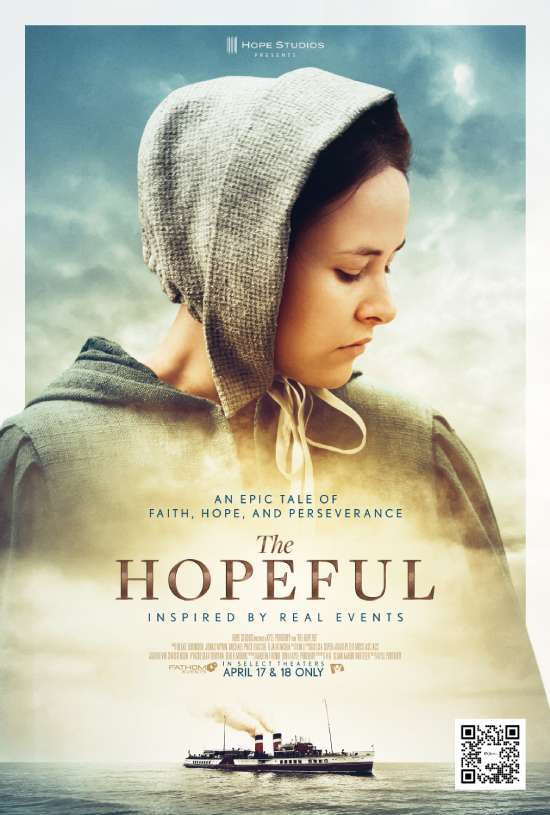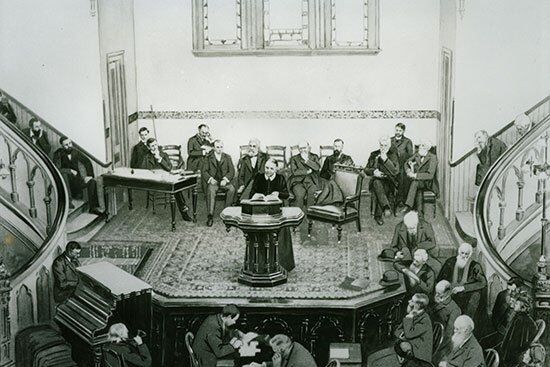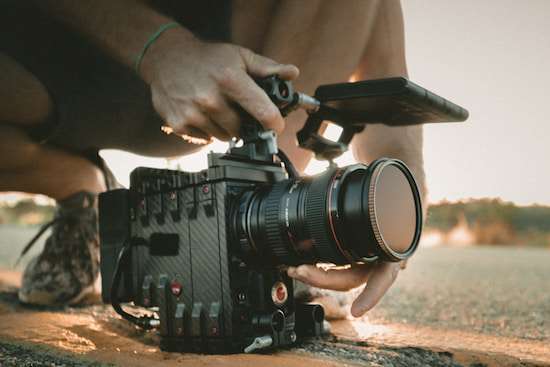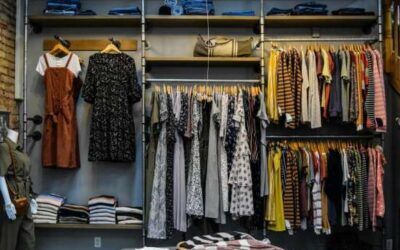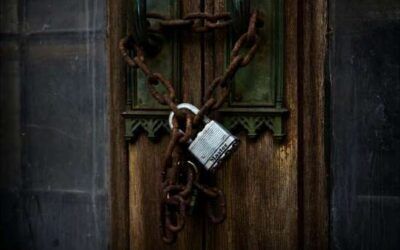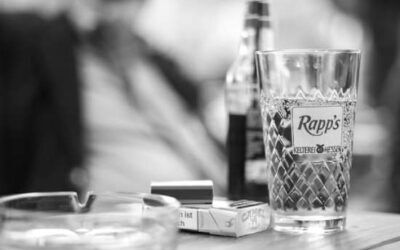Interested in learning more about the independent film The Hopeful? We’ve gathered all the information you need in one place. Find out:
- Ticket info, and when and where you can watch it
- A synopsis of The Hopeful
- [Spoiler Alert] A glimpse at the true story behind The Hopeful
- What the message of The Hopeful means to us today
(If you’d like to avoid the spoilers, watch for the link to skip to the last section.)
When and where is it showing, and how do I get tickets?
The Hopeful is showing for an exclusive two-day release in 900 cinemas across the U.S. on April 17-18, 2024.
(Check out the trailer here.)
The easiest way to find locations, showtimes, and tickets is to visit the Fathom Events website to search for a local theater showing the film. From there, you can reserve your tickets.
You can schedule a group booking on The Hopeful official website by clicking on the “Group Tickets” link at the top of the page. There is also an option to host a showing of this movie at your home church.
What is The Hopeful about?
The Hopeful is an independent film and historical drama that recounts how a religious movement of the mid-1800s changed the landscape of Christianity across North America.
Not long after the Second Great Awakening in the United States, a humble farmer and war veteran named William Miller became convicted to study the Bible seriously. In doing so, he happened upon surprising and powerful things about the Second Coming of Jesus Christ. After eventually sharing his discoveries and interpretations, it didn’t take long for the word to spread.
The Hopeful takes us back to that time of revival, telling the stories of those who accepted Miller’s teachings and dedicated their lives to sharing their newfound hope.
We meet Ellen White, a young woman whose life had been defined by struggles and setbacks. She joined the Millerite movement despite the backlash she and her family faced. And at that time, she had no idea what extraordinary things were about to become part of her life.
Then there’s Joseph Bates, a retired sea captain who dedicated himself to the Millerite ministry, even when he and his wife were down to their last penny.
And we can’t forget James White, a young teacher who became a key figure in spreading the Advent message, even at the cost of his own health.
Collectively, the faith and fervor of this Advent Movement are inspiring and contagious. But its story is not without its twists, turns, disappointments, and obstacles.
Would they still find hope in the Bible’s wisdom when Miller’s interpretation doesn’t turn out the way they expect?
You’ll have to watch The Hopeful to find out!
Or if you’ve already had the chance to watch The Hopeful, keep reading to get a behind-the-scenes look at the true events the film is based on.
If you don’t want to read the spoilers below, you can skip to the last section.
All the Information You Need on The Hopeful:
- Get tickets
- Make a group booking
- When: April 17-18, 2024
- Where: 900 cinemas across the U.S.
- Director: Kyle Portbury
- Producers: Kyle Portbury, Bin Li, and Martin Thorne
- Executive Producers: Kevin Christenson, Kingsley Wood, Ken Vogel, Derek Morris, Tony Knight, and Chester Stanley
- Editor: Bin Li
- Writers: Aaron Hartzler and H.G. Sloan
- Produced by: Hope Studios and Kyle Portbury Films
- Leading Cast: Tommie-Amber Pirie, Bill Lake, Timothy Paul Coderre, and Maddy Martin
- Music by: Jonas Myrin, Blake Robinson, and Michael Price
- Movie Length: 1 hour, 30 minutes
- Movie Rating: Not Rated
Spoilers ahead!
A deeper look at The Hopeful
We’ll uncover the true story of The Hopeful by answering these frequently asked questions:
- What historical events was The Hopeful based on?
- Who was William Miller?
- Where did Miller get the 2,300-day prophecy from?
- Who were the Millerites?
- What really happened on October 22, 1844?
- How did the Adventist Church really start?
- Who were some of the Adventist figures mentioned in the movie?
- Was Ellen White a real person?
- Did Ellen White really have visions from God?
- Who was the narrator on the boat?
- What is the Adventist Church like today?
Let’s start from the top.
What historical events was The Hopeful based on?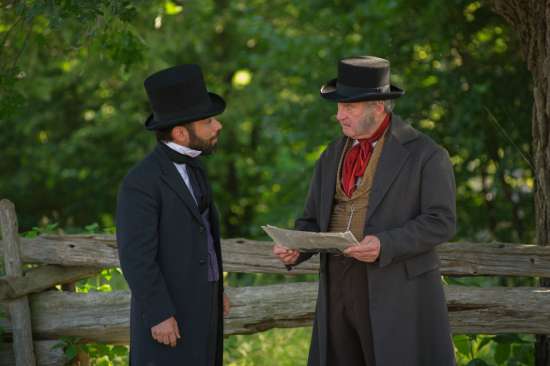
The Hopeful is based on true events in the late 1800s, picking up in the aftermath of the Second Great Awakening, a time of religious revival in the United States.1
It describes how the Millerite Movement, a religious movement that began in 1831, started because of one man’s newfound interest in Bible prophecy.
The movie covers how this movement took hold among so many people and spread so quickly. We get to see what it was about this religious message that had such a huge impact on people, causing them to enthusiastically engage in personal and small-group Bible study (which was much less common back then).
The movie also sheds light on the 1844 event known as the Great Disappointment, and what it was like for the individuals and families who gave up their livelihoods and sold all their possessions because they thought the world was about to end.
Though several new religious groups emerged after the Great Disappointment, the movie focuses on the origins of the Seventh-day Adventist Church. It explains how this group of dedicated Christians dealt with considerable discouragement and how their continued, diligent Bible study eventually led to the denomination’s organization in 1863.
The movie also touches on the role the early Adventist Church played in promoting health and temperance, which were both significant concerns for many Americans at that time.2
And while the film doesn’t focus specifically on these two events, it includes a first-person account of part of the War of 1812 and briefly discusses events that led to the Civil War.
Who was William Miller?

“Courtesy of the Ellen G. White Estate, Inc.”
William Miller was a farmer and a veteran soldier of the War of 1812.
Though Miller hadn’t always been interested in religion, He became curious about God when his life was miraculously spared during the battle of Plattsburgh. He survived despite being within the blast zone of an exploding shell.3
This prompted him to study the Bible, which eventually grew his interest in prophecy.
He discovered a prophecy in the book of Daniel that he believed predicted the timing of Christ’s Second Coming. Though He didn’t feel qualified to share the prophecy as a mere farmer, the progression of events from that time on convinced him that God was calling him to share this message with the world.
Learn more about William Miller.
Where did Miller get the 2,300-day prophecy from?
Miller got the prophecy of Jesus’ Second Coming from Daniel 8:14, part of a passage that describes a future event in which Jesus must “cleanse” the “sanctuary.”
“And he said to me, ‘For two thousand three hundred days; then the sanctuary shall be cleansed’” (Daniel 8:14, NKJV).
Miller assumed that the sanctuary represented the earth, leading him to believe this prophecy was talking about the Second Coming of Christ—the day He would cleanse the earth of sin.
He came to the understanding that days symbolize years in Bible prophecy (Ezekiel 4:6), which was also a known approach among Bible scholars. This meant that the 2,300-day prophecy was really talking about a 2,300-year timeline.
He also discovered where this timeline started. The Bible says both the 2,300-year prophecy and another prophecy, the 490-year prophecy, will start at the same time (Daniel 9:24-27). And given that the 490-year prophecy began with the decree to rebuild Jerusalem in 457 B.C.,4 Miller understood that the 2,300-year prophecy would begin at that time, too.
He did the math and discovered that 2,300 years after 457 BC would be the year 1843.
He later figured that in order to account for the shift from BC to AD, he would have to add an extra year, making the year of Christ’s return 1844.
Later on, a man named Samuel Snow determined that the 2,300-year prophecy would be fulfilled on the Day of Atonement, as this was the one day of the year Hebrew priests in the Old Testament would enter the sanctuary for a ceremony that represented the cleansing of sin.
With this in mind, he determined that Jesus would return on October 22, 1844.
But what actually happened on that day was a lot different than what the Millerites were expecting.
Learn more about the 2,300-day prophecy.
Who were the Millerites?
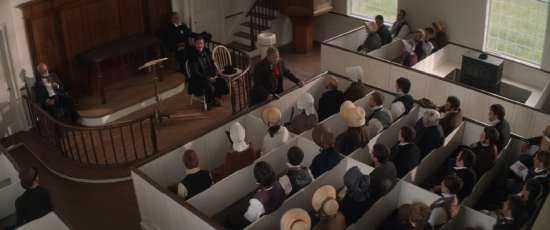 The “Millerites” was the name given to the growing group of Christians who accepted William Miller’s teaching that Jesus would return in 1844.
The “Millerites” was the name given to the growing group of Christians who accepted William Miller’s teaching that Jesus would return in 1844.
This teaching was especially groundbreaking because Miller didn’t speak of the Second Coming as a distant, symbolic, or spiritual event, as many people thought of it at the time. He taught that Jesus’ return would be literal, physical, and soon.
Most of the people who accepted this message were already members of various Protestant churches, many of them Methodists or Baptists.
Despite the large following, however, many Millerites were shunned by their own congregations. Some mocked them for their convictions and enthusiasm. And many of them ended up being outright rejected by the churches they’d attended for years.
But in spite of their reception, the Millerites continued to hold on to their faith, working hard to tell others about what they believed. This faith was evident in how many of them donated all they had to spread the word that Jesus was coming soon.
With the help of an enthusiastic preacher, Joshua Himes, Miller continued to spread the message. Eventually, Miller estimated that between 50,000 to 100,000 people had accepted this interpretation of the 2,300-day prophecy.5
As the day drew closer, more and more Millerites began to sell their homes, their property, and any remaining earthly possessions.
They were ready to put life on earth behind them, putting all their faith in the hope that Jesus would come to bring them to a better life in heaven, and then on a re-created New Earth (Isaiah 65:17; 66:22; 2 Peter 3:13; Revelation 21:1).
So it’s no wonder that October 22, 1844, became known as the Great Disappointment. This bitter turn of events caused many Millerites to abandon their faith in the Second Coming altogether.
But some believers continued to search the Scriptures in an attempt to understand why Jesus didn’t return and figure out where they had gone wrong.
Learn more about the Millerites and their influence.
Find out all the details about the Great Disappointment.
What really happened on October 22, 1844?
What Miller and other believers didn’t yet understand was that the 2,300-year prophecy didn’t refer to the Second Coming at all, but the day Jesus would enter the heavenly sanctuary (similar to the ceremony of the Old Testament priests) to begin divine preparations for the Second Coming.
Just as the Day of Atonement was about the cleansing of sin, Jesus’ new phase of ministry in the heavenly sanctuary is also about how sin will one day be cleansed from this world. It involves His divine, just, fair, and loving judgment, which will be complete at His Second Coming.
This insight was first revealed to a Millerite named Hiram Edson not too long after the Great Disappointment. Edson discovered that the sanctuary of Daniel 8:14 wasn’t the earth, but a literal sanctuary set up in heaven (Hebrews 8:1-5; Hebrews 9:24)—the one the Old Testament sanctuary was modeled to represent.
Edson and fellow Advent believers turned to the Bible to see if it confirmed this concept. In doing so, they found numerous references to the heavenly sanctuary, eventually coming to understand that October 22, 1844, marked the day Jesus began what would one day be called His “Investigative Judgment” or “Pre-Advent Judgment” before the Second Coming.
With this understanding and renewed hope in God’s Word, the Advent Movement continued in its new direction.
Learn what the Bible has to say about Christ’s work in the heavenly sanctuary.
How did the Adventist Church start?
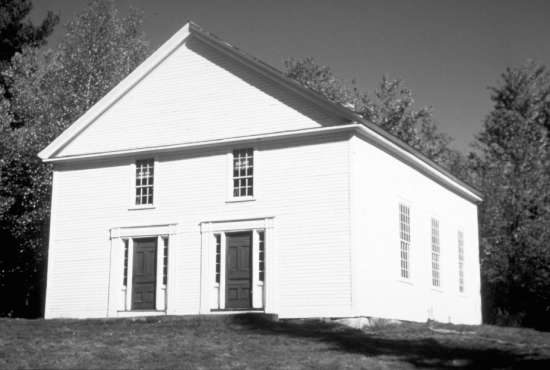 The Adventist Church was started by believers who continued to study God’s Word after the Great Disappointment.
The Adventist Church was started by believers who continued to study God’s Word after the Great Disappointment.
As they prayerfully poured over the prophecies about Christ’s return and other related passages, they learned more and more. They began to discover Bible truths that had been forgotten, misunderstood, or neglected—like the significance of the heavenly sanctuary, salvation by faith, and the seventh-day Sabbath.
With these discoveries, the believers began to publish material to distribute, eager to share these things with others.
The group wanted to expand its evangelistic efforts, own property, and determine how to be good stewards in managing such a large, growing endeavor. But it was difficult, given they weren’t a formal organization. So in 1860, they decided that they would need to become an organized church.
One member proposed that they be called Seventh-day Adventists for their key beliefs in the seventh-day Sabbath and the Second Advent, or Second Coming, of Christ.6 This organization was made official on May 21, 1863.7
William Miller passed in 1849, so he didn’t have the opportunity to join the Seventh-day Adventist Church. But he did cling to the Advent faith that Jesus would come again one day.
Find out more about what “Adventist” really means.
Who were some of the figures mentioned in the movie?
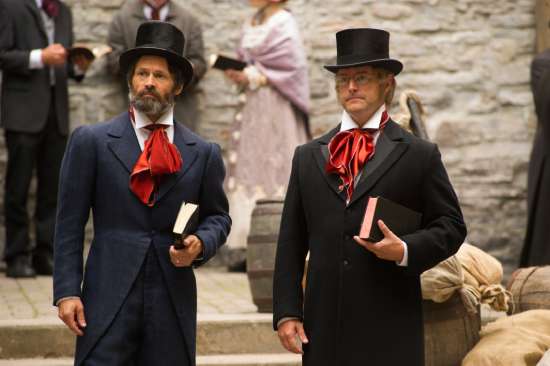 Many of the characters in The Hopeful were based on real people. They include:
Many of the characters in The Hopeful were based on real people. They include:
- William Miller: In studying and developing an interpretation of the 2,300-day prophecy, he became the founder and leader of the Millerite movement.
- Joshua V. Himes:8 After accepting Miller’s message, Himes became his evangelistic partner. He coordinated and supported printing efforts and scheduled Miller’s speaking engagements.
- James White: He was a school teacher who accepted and preached Miller’s message. He continued to study the Bible after the Great Disappointment, becoming a prominent leader in the early Seventh-day Adventist Church. He married fellow Adventist leader, Ellen White, and became known for his work in the publishing ministry.
- Joseph Bates: He was a retired sea captain who accepted the Millerite message and was discouraged by the Great Disappointment. As one of the Millerites who sold his farmland, he and his family suffered financially. But through it all, Bates continued to study God’s Word, support evangelistic efforts, and write about Bible truths like the Sabbath, becoming one of the leaders of the early Seventh-day Adventist Church.
- Samuel Snow:9 He grew up rejecting Christianity and the Bible but was eventually converted by William Miller’s message. He became a Millerite preacher and calculated that the date October 22, 1844, marked the end of the 2,300-day prophecy, which was then believed to be the time of the Second Coming.
- Hiram Edson:10 He encouraged believers after the Great Disappointment, telling others that God had revealed to him that October 22, 1844, signified the beginning of Jesus’ work in the heavenly sanctuary. He was convicted to share the new truths of the Bible he’d learned, especially encouraging others to keep the seventh-day Sabbath.
- Ellen White: This young woman discovered a new hope for a loving God upon hearing Miller preach, and she eventually accepted his message. God gave her insight and encouragement in the face of the Great Disappointment by sending her a vision. She felt impressed to share this hope with others and eventually became a co-founder of the Adventist Church. Right up until her death, she ministered to others through her inspired writings and practical counsel.
- Rachel Harris Oaks Preston:11 A widowed school teacher and Seventh-day Baptist, this enthusiastic Christian woman accepted the Millerite message and is known as a key influencer when it came to keeping Saturday as Sabbath instead of Sunday.
- Edson White:12 The second-born of Ellen White’s four sons, he was a bit of a troublemaker growing up. But he eventually came to submit himself to God. He felt a special calling to serve former slaves in the South, teaching them how to read and study the Bible from his missionary boat, The Morning Star.
All of these people dealt with real, human issues—poverty, family problems, spiritual confusion, and disappointment—but their continued dedication to God brought them through and helped them work together to serve others and tell people about the faith they could find in Jesus.
Learn more about these pioneers of Adventism.
Was Ellen White a real person?
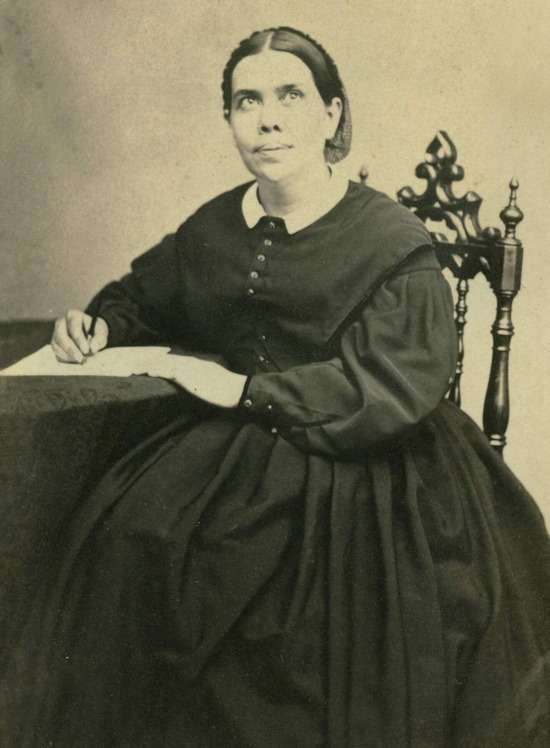 Yes.
Yes.
And when she was growing up, Ellen White struggled with a lot of health issues and depression. It all stemmed from an unfortunate incident in her childhood when a classmate threw a stone at her and it struck her in the face. This caused an injury that left her weakened and in frequent pain, to the point where she was unable to attend school.
In addition to these struggles, she had a difficult time finding assurance in Christ’s salvation.13
This was largely due to how she had learned about the process of salvation for Christians. At one time she felt that she was a lost cause, not understanding how she could ever be righteous enough for heaven.14 Her fears would only be magnified by preachers who misrepresented God as a vengeful judge.15 But in Miller’s message, she found peace that dispelled her depression. She eventually came to understand that Jesus was a merciful and loving Savior.16
And though she was certainly among the profoundly disappointed people on October 22, 1844, she didn’t give up on her faith.
She joined the believers who continued to study the Bible in search of God’s truth. And eventually, the Holy Spirit called her to become one of their leaders.
She married another Adventist leader, James White. Together, they had four sons and worked to spread their faith through the written word and speaking engagements. However, they often struggled to balance their duty to their mission with their family and their own health.
James White worked so hard that he compromised his health and died at the age of 60. But despite losing him and two of her children, Ellen White continued to stay faithful to God.
She had the courage to be a voice for Him, using the insight He gave her to help encourage and guide early Advent believers in their study of Scripture.
Learn more about who Ellen White was.
Did Ellen White really have visions from God?
 Yes, and there are many eyewitness accounts from those who were with her when she received some of them.17
Yes, and there are many eyewitness accounts from those who were with her when she received some of them.17
These accounts report that Ellen White did many miraculous things while in vision—things that a young woman in poor health, with only a third-grade education, wouldn’t be able to accomplish on her own.
On several occasions, she was observed to have stopped breathing while in vision.18 There were also instances where she perfectly recited lengthy Bible passages verbatim or even displayed unnatural strength.19
Though this might sound unusual, it helps to remember that visions were a common and well-documented phenomenon in the Bible.20 And even though we don’t hear much about prophetic visions today, the Bible tells us that the gift of prophecy will continue until the last days and that visions can be had by anyone God chooses—young, old, man, or woman (Joel 2:28).
But how do we know these visions came from God?
The Bible provides us with ways to “test” a prophet. Ellen White passes all of them.
Above all, she always gave God credit for her gift and only ever attempted to point people back toward the truths the Bible already contained. She never tried to add anything to Scripture, only to help people read it, remember it, and understand it.
She may not have been anything special by human standards, but God chose her to be one of His messengers.
She was scared at first. She didn’t feel up to the task. But, like William Miller, she submitted to God and accepted the calling He had for her.
Her first vision happened during a women’s prayer group. The scene she was shown was meant to encourage Advent believers not to give up their hope in Christ’s return.
Of course, her acceptance of the prophetic gift didn’t mean she’d automatically be accepted and respected by everyone she encountered.
As depicted in The Hopeful, two men, Sargent and Robbins, doubted her visions.21 They spoke out against them, saying they weren’t from God. And in their effort to avoid crossing paths with her, they went so far as to lie, saying they would meet Ellen White in Boston when they were really going to Randolph.
But after another vision from the Holy Spirit, Ellen felt that God wanted her to go to Randolph instead…and she met them there.22
While there, she had another vision, and while she was in vision she somehow lifted a huge, heavy Bible over her head for hours, pointing to different passages and reciting them word for word without looking at the pages.23
She had many other visions in her lifetime.
In one vision she predicted the Civil War.24 In another, she was shown that the issue of slavery was one of the main motivations for the war.25 Other visions led her to offer guidance, such as when God gave her a vision about health principles that would help people live healthier, happier lives.
Overall, her visions helped the Adventist Church grow by keeping them aligned with the Bible and encouraging them to spread their faith worldwide.
Get more information on Ellen White’s visions.
Who was the narrator on the boat?
 The narrator on the boat at the beginning of the movie was none other than John Nevins Andrews, the first Adventist overseas missionary.
The narrator on the boat at the beginning of the movie was none other than John Nevins Andrews, the first Adventist overseas missionary.
As one of the Millerites to come out of the Great Disappointment, Andrews joined other Advent believers and helped spread their faith through his writings and preaching.
He was an especially talented Bible student, studying concepts like tithe, the state of the dead, and the idea that the Sabbath begins and ends at sundown, among other things.
The Adventist Church eventually sent him, along with his children, Charles and Mary, to Switzerland in 1874 to serve as a minister to Sabbath-keepers there.
His namesake is memorialized through Andrews University, the first Seventh-day Adventist higher education institution, and the location for its first and largest theological seminary.
Through the efforts of early Adventist pioneers like Andrews, a small group of dedicated believers grew into the Adventist Church we see today.
Learn more about John Nevins Andrews.
What is the Seventh-day Adventist Church like today?
The Adventist Church is a Protestant Christian denomination that emphasizes the Bible as the center and foundation of its beliefs and upholds Jesus as the Son of God and the only way to receive salvation.
Adventists are often known for having a focus on healthy living, promoting good stewardship, and encouraging an active, evident faith through lifestyle.
At the time of this page’s publishing, the worldwide Adventist Church has over 95,000 churches and over 21 million members across the globe.26
But this denomination has established more than just churches. There are over 1,700 Adventist hospitals and health clinics and 9,000 educational institutions.
We’re also concerned with serving others and safeguarding human rights, which is why we established the Public Affairs and Religious Liberty (PARL) organization and the Adventist Development and Relief Agency (ADRA).
We are also one of the most diverse and expansive Protestant denominations. Out of the 235 countries recognized by the United Nations, Adventism is present in 212.27
Throughout the years, the Adventist Church has grown considerably. Though we have come a long way in expanding and reaching the world since our founders first named our denomination, our goal remains the same—to tell the whole world about Jesus and His soon coming.
Learn more about who Adventists are.
The hope we find in The Hopeful
As brought up in The Hopeful, Advent believers in the 1830s and 1840s were expecting Jesus to return and bring them to a better life in heaven.
They were desperate for the joy and peace of heaven. They couldn’t wait to live in a world without sin, pain, or sadness. They knew that all their troubles would end when Jesus returned.
We too have this hope that Jesus will come to deliver us.
But we don’t have to wait until Jesus arrives to accept it. We can find hope right now as Jesus leads us in a closer relationship with Him, guiding our lives and bringing us peace, joy, and purpose, even when life is hard.
We can trust that God will guide us, just as He guided ordinary people like William Miller and Ellen White. All it takes is willingness!
No matter who we are, He can use us to accomplish extraordinary things in His name.
Experience The Hopeful for yourself. Get tickets today from Fathom Events or recommend the film to a friend.
Already seen the movie? Curious to keep learning?
Related Articles
- “Second Great Awakening,” Britannica, March 30, 2024. [↵]
- “Temperance Movement,” Britannica, Feb. 13, 2024. [↵]
- Maxwell, C. Mervyn. Tell It to the World, Pacific Press, 1977, p. 11. [↵]
- Shea, William, “Supplementary Evidence in Support of 457 B.C. as the Starting Date for the 2300 Day-Years of Daniel 8:14,” Journal of the Adventist Theological Society, vol. 12, no. 1. [↵]
- “William Miller,” Brittanica, Feb. 11, 2024. [↵]
- Loughborough, J. N., The Great Second Advent Movement, Adventist Pioneer Library, 2016, p.291. [↵]
- “Seventh-Day Adventists,” Encyclopedia of Arkansas, Jan. 30, 2024. [↵]
- Morgan, Douglass, “Himes, Joshua Vaughan (1805-1895),” Encyclopedia of Seventh-day Adventists, Sept. 13, 2020. [↵]
- Oliveira, Kevin Vinicius Felix and Clodoaldo Tavares, “Snow, Samuel Sheffield (1806–1890),” Encyclopedia of Seventh-day Adventists, April 7, 2022. [↵]
- Strayer, Brian E., “Edson, Hiram (1806–1882),” Encyclopedia of Seventh-day Adventists, Oct. 17, 2020. [↵]
- Kaiser, Denis, “Preston, Rachel Harris Oaks (1809-1868),” Encyclopedia of Seventh-day Adventists, Jan. 12, 2023. [↵]
- “The Morning Star,” Present Lineage Journey. [↵]
- White, Ellen Gould, Testimonies for the Church, vol. 1, Pacific Press Publishing Association, 1885, pp. 23-30. [↵]
- Ibid, pp. 22-23. [↵]
- Ibid, pp. 23-24. [↵]
- Ibid, pp.21-34. [↵]
- “Eyewitness Accounts,” Ellen G. White Estate, 2024. [↵]
- Ibid. [↵]
- “Ellen’s Longest Vision,” Ellen G. White Estate. [↵]
- Daniel 7:13-14; Numbers 12:6; Acts 18:9. [↵]
- “Ellen’s Longest Vision.” [↵]
- Ibid. [↵]
- Ibid. [↵]
- “Slavery, The Civil War and Ellen White,” Present Lineage Journey. [↵]
- Ibid. [↵]
- “Seventh-day Adventist World Church Statistics 2021,” General Conference of Seventh-day Adventists. [↵]
- Hosokawa, “The Seventh-day Adventist Church: 160 years later,” General Conference of Seventh-day Adventists, June 3, 2023. [↵]
More Answers
Do Seventh-Day Adventists Have “Rules” For Clothing?
Many religions have guidelines on dress, but what about the Adventist Church? Discover how Adventists choose to dress based on biblical principles.
11 Reasons People Become Seventh-day Adventists
Curious why many people become Adventists? Here are elements of Adventist beliefs, values, and mission often reflected in people’s decisions to join.
What’s the Seventh-day Adventist General Conference Session?
At the General Conference Session, Adventist delegates from around the world gather to assess the state of the organization, pray, and discuss current issues. Here’s how it works.
How Adventists View the End of the World
The end of the world is no fun to think about. But here’s how we can actually find hope and comfort in what’s to come.
What Is an Adventist Medical Missionary?
A medical missionary in the Adventist Church is someone who cares for the medical needs of people as a way of showing the love of Jesus. They may travel to another country, or even just serve in their hometown.
Is the Seventh-day Adventist Church Protestant?
Learn how the beliefs of the Seventh-day Adventist Church align with the “5 solas” of Protestantism.
Are Seventh-day Adventists Evangelicals?
According to its origins and definition, evangelicalism is about following Jesus and the Bible and sharing the Gospel through the way we live our lives. Adventists wholeheartedly harmonize with these principles.
Could Anything Keep Me from Becoming an Adventist?
We are each saved through Christ. But when it comes to church membership, are there certain beliefs or expectations to become an Adventist?
Do Seventh-day Adventists Have “Rules”?
We uphold principles we believe will help us maintain a closer relationship with Jesus and His Word. Learn how these principles guide Adventist lifestyles.
Do Seventh-day Adventists Have “Rules” For Marriage?
Around the world, many cultures and religions have various marriage traditions, expectations, or even rules when it comes to choosing a partner, planning the wedding, extended family logistics, or a number of other things.
Can a Seventh-day Adventist Marry a Non-Adventist?
Yes. Seventh-day Adventists are not under any official rules that dictate who they can or cannot marry. This is a personal, life-altering decision between the couple and God.
What Adventists Believe About Alcohol and Tobacco Use
The Seventh-day Adventist Church has historically discouraged the use of alcohol and tobacco. Even before the church started in 1863, its leaders were realizing the negative effects of these substances.
Jewelry—Why Do Many Seventh-day Adventists Choose Not to Wear It?
If you walk into a Seventh-day Adventist church service, you might notice that many people aren’t wearing earrings, bracelets, necklaces, or sometimes even wedding rings.
International Pathfinder Camporee
Youth aged 10-15 in the Adventist Church’s global Pathfinder program look forward to the International Camporee every 5 years. This event brings together Pathfinders from around the world for exciting activities.
How Adventists interpret Bible prophecy
Bible prophecy conjures up a variety of emotions in people. For some, it feels exciting or mysterious.
How Are Seventh-day Adventists Different from Other Protestants?
As a Protestant Christian denomination, the Seventh-day Adventist Church regards the Bible as the ultimate guide and looks to Jesus Christ as the only way to salvation. We do have some differences of belief or interpretation when it comes to topics like Bible prophecy, end-time events, the Sabbath, and a person’s state after death.
How Adventists Handle Death and Funerals
Most Seventh-day Adventist funeral services are similar to those of other Protestant denominations, such as Methodists, Baptists, or Presbyterians, but you might find a few differences or unique nuances.
Adventist Culture
Many Seventh-day Adventists adhere to specific lifestyle principles that can make them stand out from those in other Christian denominations. Whether it’s going to church services on Saturday or eating the popular Adventist entrée of “haystacks.”
Do Adventists Observe Easter-Related Holidays?
Jesus Christ’s resurrection, celebrated on many Easter-related holidays, is central to the beliefs of the Seventh-day Adventist Church. And that means we seek every opportunity to remember it.
An Overview of Seventh-day Adventist Higher Education
The Seventh-day Adventist Church has about 118 tertiary schools around the world. Though many of them are within North America, you’ll also find Adventist universities in countries across the world—places like Croatia, Austria, Brazil, Madagascar, and the Philippines.
The Ten Commandments from a Seventh-day Adventist Perspective
Ever eaten a salad and gotten a big piece of green stuck in your teeth? And you didn’t realize it was there until you looked in the mirror? (Because no one ever told you!)
The Benefits of A Seventh-day Adventist Academy
Adventist academies are high schools (grades 9-12) that are owned and operated by the Seventh-day Adventist Church.
Are Seventh-day Adventists Christians?
Yes, the Seventh-day Adventist Church is a Protestant Christian denomination formed in 1863. Just like other Christians, we believe that Jesus Christ is our Savior and seek to follow the principles of the Word of God.
Adventist Movies: Where Faith and Film Meet
The Adventist Church uses film to share our faith and uplift positive values. Learn more about specific Adventist-produced films and where to find them.
Do Adventists Celebrate Christmas?
In general, most Seventh-day Adventists do celebrate Christmas.
Since our denomination doesn’t have specific guidelines about holidays, it’s up to each member to decide whether to celebrate it based on their personal convictions and study of the Bible.
What Does the Bible Say About Modesty
Seventh-day Adventists and Christians in general try to ensure their outward presentation and lifestyle glorify God. This often involves daily habits like the ways we hold conversations, the ways we dress and accessorize, and the ways we regard other people when we’re out and about.
How Do Adventists Make Movie and Music Choices?
How do Adventists decide what music to listen to and which movies to watch? Learn how Bible principles can help us make better entertainment choices.
Does the Seventh-day Adventist Church Believe in Paying Tithe?
Seventh-day Adventists believe in paying tithe and offerings based on the biblical command and our commitment to being wise stewards of God’s resources. These donations help fund the mission of the Adventist Church by supporting pastors, missionaries, church expenses, and evangelistic projects, among other things.
Seventh-day Adventist World Population and Demographics
The Adventist Church has more than 22 million members and 100,000 churches worldwide, plus a large system of hospitals, schools, and publishing houses. Learn more about this diverse church.
Didn’t find your answer? Ask us!
We understand your concern of having questions but not knowing who to ask—we’ve felt it ourselves. When you’re ready to learn more about Adventists, send us a question! We know a thing or two about Adventists.

